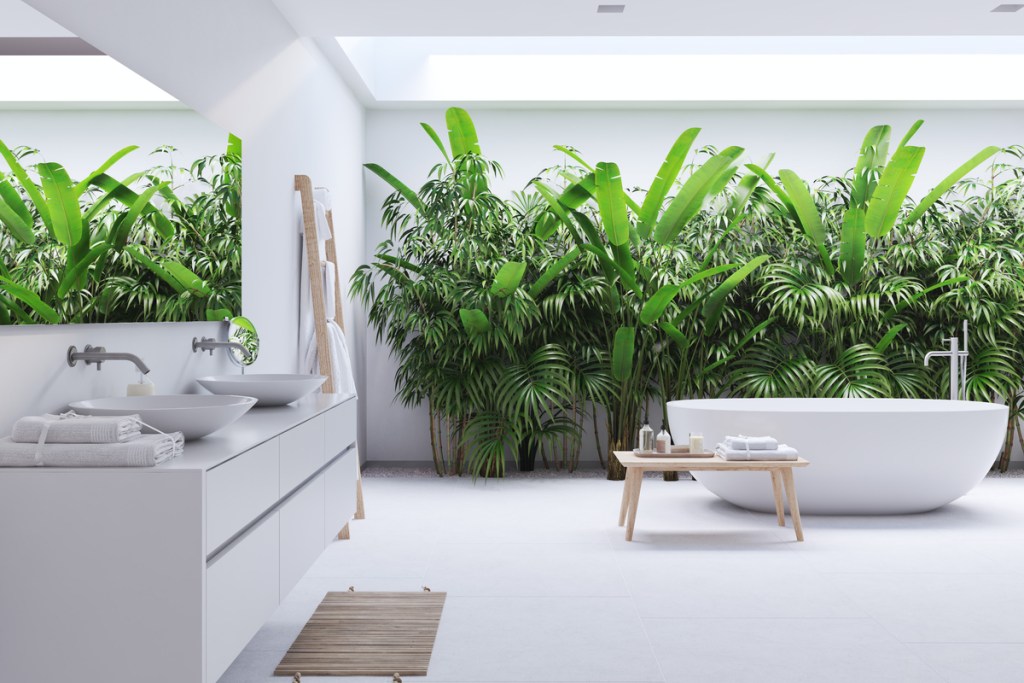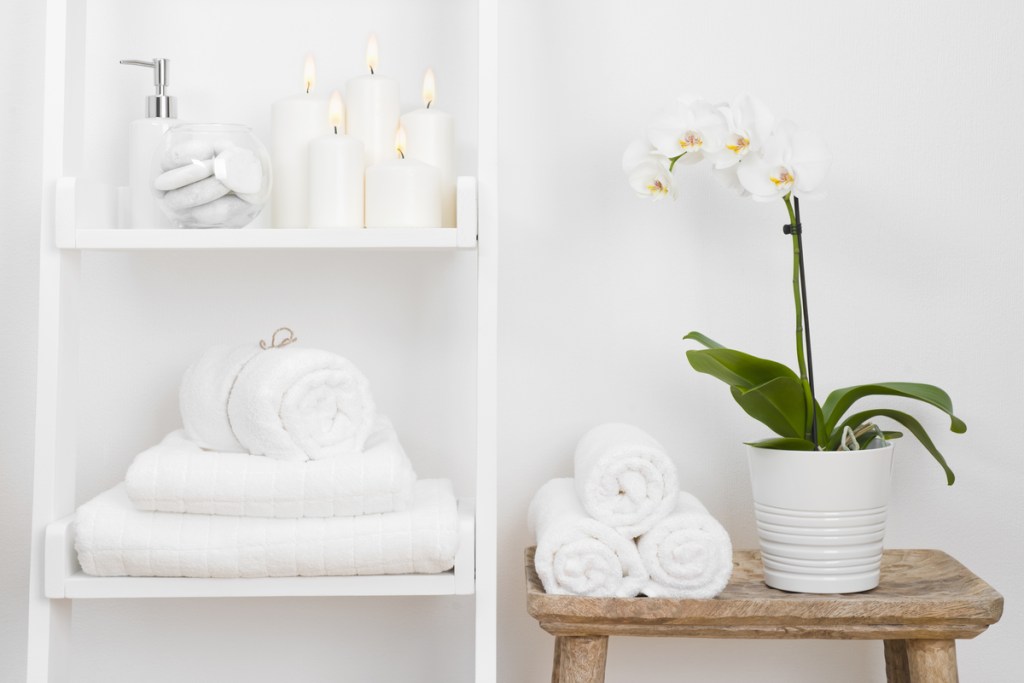Bathrooms aren’t often thought of as the first place to grow plants (or really decorate in any way). They can be small or cramped and aren’t our most lived-in room. But did you know they can actually be a perfect environment for a handful of plants? There’s a small variety of bathroom plants you can grow that will brighten up the space and help filter the air, too!
What makes bathroom plants difficult
Bathrooms often have low light and a lot of moisture, which isn’t an ideal environment for most houseplants. Growing a plant in your bathroom successfully isn’t as easy as just picking one out from a nursery and plopping it on the shelf or counter and calling it a day. For example, succulents prefer drier conditions and wouldn’t thrive. And on top of the low levels of sunlight and high levels of humidity, bathrooms are also notorious for intense temperature fluctuations (after all, you aren’t running the shower all day, every day).
Any plant you put in there needs to be able to tolerate a range of temperatures, high humidity levels, and low lighting. There are some that fit that criteria, though, and they make great bathroom plants with the proper care!

Best plants to grow in your bathroom
This list isn’t all inclusive, but these are a few plants that are often regarded as making great bathroom plants. If you don’t have any natural lighting in your bathroom (or you think it’s too little for even a low light tolerant plant), you can always purchase small grow lights that will help supplement the plant’s growth.
Pothos (any variety)
Pothos plants are popular among indoor gardeners for their easy care as well as for their ability to tolerate a range of environments. Their green heart-shaped leaves (sometimes with yellow or white variegation, depending on the variety) bring simple beauty to any room—especially a bathroom. When grown in a hanging basket or on a shelf, the vines can get up to ten feet long. It might take a while in a bathroom environment, especially if yours doesn’t have as much lighting, but a pothos is a cascading beauty that will make your bathroom decor stand out.
Light needs: Bright indirect light but can tolerate low light
Water needs: Let soil dry out between waterings
Soil needs: Well-draining soil
Begonia (most varieties)
Not all varieties of begonias can be grown indoors, but the ones that can are often able to tolerate a bathroom environment. They love warm, humid environments and would look lovely on a shelf. The only caveat is that they prefer to have some early morning sunlight where possible. If you don’t think your bathroom has enough light, you can either purchase some grow lights or buy bulbs for your regular lights that help supplement the nutrients the begonia needs. Keep in mind that begonias grown in partial shade, although they can survive, likely won’t flower. But the leaves themselves are gorgeous and will still add a nice touch of greenery to the space.
Light needs: Bright indirect light but can thrive in partial shade
Water needs: Enjoys consistent moisture but doesn’t like to be soaked
Soil needs: Well-draining soil with some organic matter

Ferns (Boston, maidenhair, bird’s nest, and button varieties)
Many varieties of ferns—like the Boston, maidenhair, bird’s nest, and button—are shade-loving in their natural habitats and able to tolerate some shade indoors, too. They can tolerate the temperature changes that happen from day to night and will appreciate the bathroom’s moisture and humidity. Sometimes, you’ll even see inspiration posts where people are growing ferns directly in the shower; however, this should only be done if the shower gets ample sunlight, since you won’t be able to place grow lights in there to help the plant. Most varieties of ferns have delicate, small leaves, which makes it a very gentle bathroom plant.
Light needs: Partial light, partial shade
Water needs: Enjoys consistent moisture and waterings every other day; never let the soil completely dry out
Soil needs: Well-draining soil with some moss or organic matter
It’s important to consider light, temperature, and humidity requirements when looking into whether or not a houseplant can be a bathroom plant. If you have an extra houseplant that needs a home, see if it can tolerate the environment! Otherwise, there are plenty of new plants you can get if you’re looking to bring some green into your bathroom.


